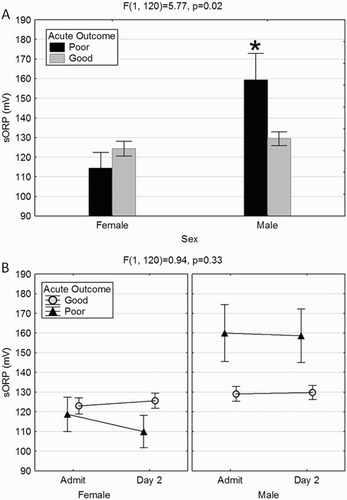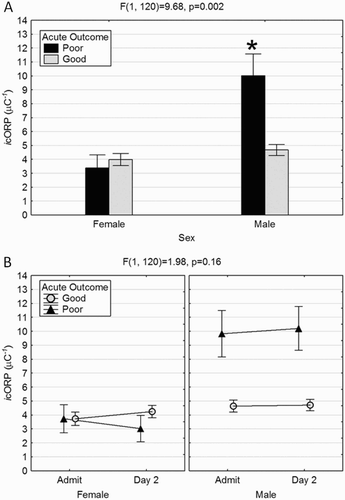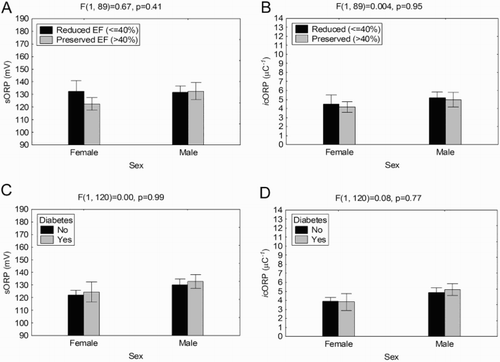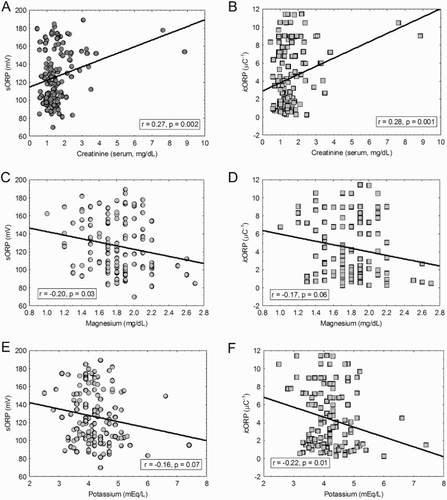Figures & data
Table 1. Demographics and descriptive statistics between sexes.
Figure 1. A poor acute outcome in males is associated with elevated sORP. (A) Males with poor acute outcome had significantly higher sORP values than those with a good outcome and compared to females over all. (B) The elevation in males with a poor outcome was evident in both the admission and day 2 sORP values. While not significant, females with a poor acute outcome appear to have a decrease in sORP values on day 2. *Significantly higher than all other groups (P < 0.05).

Figure 2. Loss of antioxidant capacity in males with poor acute outcome. (A). Similar to sORP, males with a poor acute outcome had significantly higher icORP values indicating a relative loss of antioxidant capacity not seen in males with a good outcome or overall in females. (B) There were no differences in icORP values between admission and day 2 regardless of sex or outcome. Males with poor acute outcomes had elevated icORP values on both days.

Table 2. ORP values for age-matched males and females support the notion that males with poor acute outcomes have higher sORP and lower icORP values compared to females.
Figure 3. Traditionally sex-biased variables do not account for the differences in ORP between males and females. (A, B) Average sORP and icORP were not significantly different based on reduced or preserved EF, regardless of sex. (C, D) Having diabetes did not significantly alter overall sORP or icORP values regardless of sex.

Figure 4. ORP values changed with changes in creatinine, magnesium, and potassium. (A, B) Higher creatinine values were related to higher admit day sORP and icORP values. (C, D) Higher magnesium levels were significantly associated with lower admit day sORP values, and lesser so with icORP. (E, F) Increasing potassium levels were more strongly related with decreasing admit day icORP than sORP. Correlations were run and graphed across sex.

